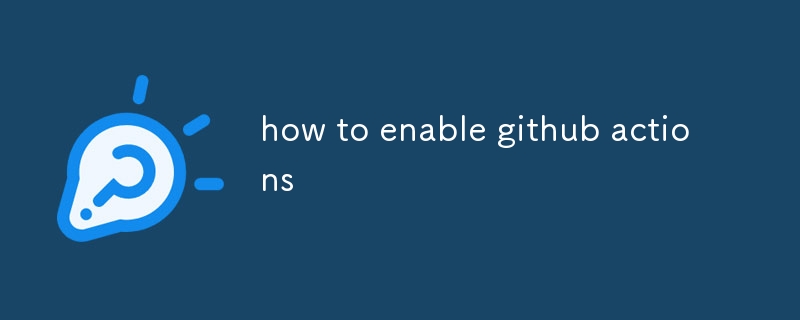
This guide provides instructions on enabling and setting up GitHub Actions for an account and project. It highlights the steps involved in creating a workflow file to specify the actions to be performed, such as checking out code, setting up Node.js,

How to enable GitHub Actions?
To enable GitHub Actions for your account, follow these steps:
Once you have enabled GitHub Actions, you can start using it in your projects.
How do I set up GitHub Actions for my project?
To set up GitHub Actions for your project, you will need to create a workflow file. A workflow file is a YAML file that defines the steps that your workflow will take.
To create a workflow file, follow these steps:
.github/workflows/main.yml.name: My workflow
on:
push:
branches: [ main ]
jobs:
build:
runs-on: ubuntu-latest
steps:
- uses: actions/checkout@v2
- uses: actions/setup-node@v1
with:
node-version: '12'
- run: npm install
- run: npm testThis workflow file will define a workflow that will run every time you push a change to your project's main branch. The workflow will first check out your code, then set up Node.js, and finally run your tests.
What are the steps to activate GitHub Actions for a repository?
To activate GitHub Actions for a specific repository, you will need to create a .github/workflows directory in the root of the repository. You will then need to add a workflow file to this directory.
The workflow file can be any valid GitHub Actions workflow file. For more information on how to write a workflow file, please see the GitHub Actions documentation.
Once you have added a workflow file to the .github/workflows directory, GitHub Actions will automatically be activated for the repository.
The above is the detailed content of how to enable github actions. For more information, please follow other related articles on the PHP Chinese website!
 Ripple's recent market trends
Ripple's recent market trends
 Computer system vulnerability repair methods
Computer system vulnerability repair methods
 What are the methods to change IP in dynamic vps instantly?
What are the methods to change IP in dynamic vps instantly?
 What should I do if the docker container cannot access the external network?
What should I do if the docker container cannot access the external network?
 Solution to missing xlive.dll
Solution to missing xlive.dll
 How to use each function in js
How to use each function in js
 How to insert video in html
How to insert video in html
 How to set ppt page number
How to set ppt page number
 How to remove people from the blacklist on WeChat
How to remove people from the blacklist on WeChat




